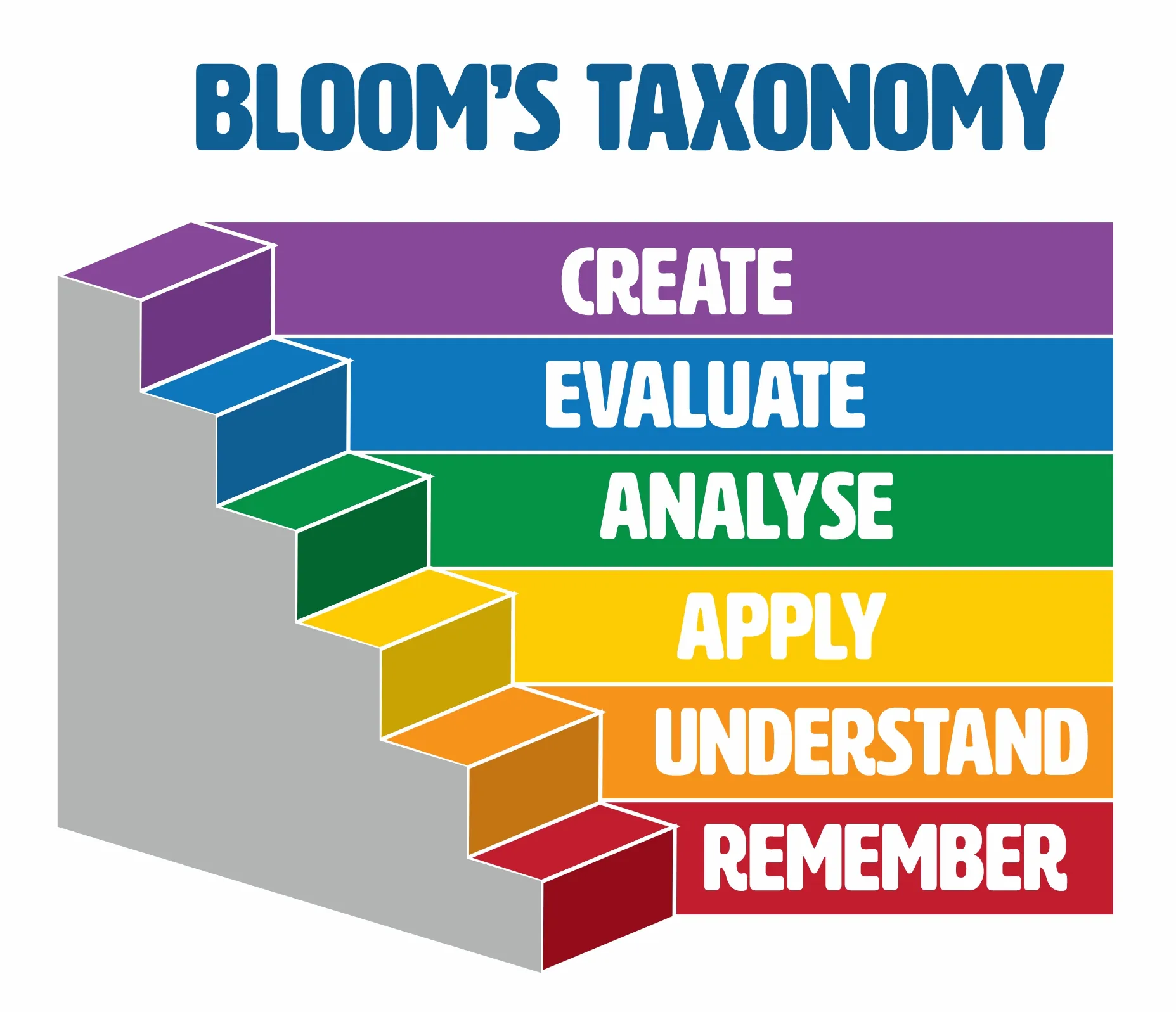
Introduction: Balancing Bird’s Eye and Worm’s Eye Views for Success
Purpose
In the dynamic landscape of both personal and professional life, maintaining a dual perspective—a high-level (bird’s eye view) and a detailed (worm’s eye view)—is essential for achieving success. This article underscores the importance of integrating these two perspectives to ensure that daily activities are aligned with overarching goals. By doing so, individuals and organizations can enhance their effectiveness, foster cohesive teamwork, and significantly increase their chances of success.
The bird’s eye view provides a comprehensive understanding of long-term objectives and strategic direction, while the worm’s eye view focuses on immediate tasks and operational details. Both perspectives are crucial: the bird’s eye view offers clarity on where one needs to go, and the worm’s eye view ensures that the steps taken are practical and productive.
Overview
Aligning daily actions with broader goals creates a cohesive path to success. This alignment ensures that every task contributes meaningfully to the overall mission, leading to improved efficiency, focus, and collective achievement. When individuals and teams operate with a clear understanding of both the high-level objectives and the detailed tasks required, they are better equipped to navigate challenges and seize opportunities.
The integration of these perspectives involves regular introspection to assess whether daily tasks align with top-level goals, clear communication of the vision to all team members, and fostering a sense of ownership and urgency. Such alignment not only streamlines efforts but also cultivates a unified purpose, leading to enhanced performance and greater success.
Intended Audience and Purpose of the Article
This article is intended for professionals, team leaders, and individuals who seek to optimize their performance and achieve their goals more effectively. Whether you are managing a team, leading a project, or working on personal development, understanding and implementing the balance between the bird’s eye and worm’s eye views can significantly impact your success.
The purpose of this article is to provide actionable insights and practical strategies for integrating these perspectives. By exploring the benefits of this alignment and offering concrete steps for implementation, the article aims to help readers enhance their focus, improve team cohesion, and achieve their objectives with greater efficiency.

1. Understanding the Bird’s Eye and Worm’s Eye Views
Bird’s Eye View (30,000-Foot Perspective)
- Definition: The bird’s eye view, often referred to as the 30,000-foot perspective, represents a high-level overview of a situation or project. This perspective focuses on the long-term goals, overarching vision, and strategic direction. It involves stepping back to see the bigger picture, including broader trends, objectives, and outcomes that are crucial for guiding the overall strategy.
- Importance: The bird’s eye view is fundamental for several reasons:
- Clarity on Ultimate Objectives: It provides a clear understanding of where you want to go, helping to set priorities and make informed decisions. Knowing the end goal ensures that all efforts and resources are directed towards achieving the desired outcomes.
- Strategic Alignment: It ensures that every action and decision is aligned with the broader mission. This alignment is crucial for maintaining focus and coherence in efforts, preventing wasted resources on tasks that do not contribute to the main objectives.
- Guidance and Direction: By offering a high-level perspective, it helps in setting long-term plans and strategic initiatives. It enables leaders to anticipate future challenges and opportunities, and to adjust strategies accordingly.
Worm’s Eye View (Ground-Level Perspective)
- Definition: The worm’s eye view, in contrast, is a detailed, ground-level perspective that focuses on the immediate tasks, day-to-day operations, and specific details. This perspective involves being deeply involved in the current activities, understanding the nuances of execution, and addressing the practical aspects of implementation.
- Importance: The worm’s eye view is essential for several reasons:
- Actionable Tasks: It ensures that daily actions and decisions are practical and relevant. This perspective helps in breaking down the broader goals into specific, manageable tasks that can be executed effectively.
- Operational Efficiency: By focusing on the details of day-to-day operations, it helps in identifying and solving problems promptly. This attention to detail enhances efficiency and productivity in achieving short-term objectives.
- Ground-Level Feedback: It provides valuable insights and feedback from the operational level, which can be used to make adjustments to the broader strategy. Understanding the challenges and realities at the ground level informs better decision-making and strategic adjustments.
In summary, both perspectives are crucial for success. The bird’s eye view provides the strategic direction and ensures alignment with long-term goals, while the worm’s eye view focuses on the practical execution of daily tasks. Balancing these perspectives allows for a cohesive approach where strategic vision and operational details work together harmoniously.

2. Aligning Daily Actions with Long-Term Goals
Daily Introspection
- Actionable Tip: At the end of each day, set aside time to review the tasks you completed and assess whether they align with your top-level goals. This practice of daily introspection helps in understanding whether your efforts are effectively contributing to your overarching objectives.
- Process:
- End-of-Day Review: Allocate a few minutes each evening to reflect on the day’s activities. Review your to-do list, project updates, and any accomplishments or setbacks.
- Alignment Check: Compare your completed tasks with your high-level goals. Ask yourself questions like:
- Did the tasks I completed today contribute towards my strategic objectives?
- Were there any activities that diverged from the broader mission?
- Adjustments: Identify any misalignments and make necessary adjustments. If you find that certain tasks did not contribute to your goals, consider how to realign your focus for the next day.
- Documentation: Keep a journal or digital log of your daily reflections. Document what worked well and what didn’t, and use this information to refine your approach over time.
Setting Clear Objectives
- Actionable Tip: Break down high-level goals into specific, actionable tasks to ensure that your daily activities are directly contributing to your long-term objectives. This approach helps in creating a clear path from strategic vision to daily execution.
- Process:
- Goal Decomposition: Start by breaking down your broad, long-term goals into smaller, more manageable objectives. For example, if your long-term goal is to increase market share, your smaller objectives might include conducting market research, developing a new marketing strategy, and launching a promotional campaign.
- Task Breakdown: Further divide these smaller objectives into specific tasks. Each task should be actionable and have a clear outcome. For instance, if one of your objectives is to develop a marketing strategy, tasks might include drafting the strategy, reviewing market trends, and consulting with stakeholders.
- Roadmap Creation: Develop a roadmap that links your daily tasks to these smaller objectives. This roadmap should include deadlines and milestones to track progress. Use project management tools or simple tracking systems to ensure that you are moving towards your long-term goals.
- Regular Updates: Regularly update your roadmap based on progress and any changes in priorities. Ensure that your daily tasks remain relevant to your evolving objectives and adjust as necessary to stay aligned with your high-level goals.
Aligning daily actions with long-term goals involves a two-pronged approach: regular introspection and clear objective setting. By reflecting on your daily activities and ensuring they contribute to your broader mission, you can maintain focus and enhance effectiveness. Breaking down high-level goals into actionable tasks and creating a structured roadmap helps in bridging the gap between strategic vision and practical execution, ensuring that every step you take brings you closer to achieving your overarching objectives.

3. Fostering a Shared Vision Among Team Members
Communicating the Vision
- Actionable Tip: Regularly share the bird’s eye view with team members to ensure that everyone understands the broader goals and their role in achieving them. Clear communication of the overall vision helps align team efforts and fosters a shared sense of purpose.
- Process:
- Scheduled Team Meetings: Hold regular team meetings dedicated to discussing the long-term vision and strategic goals. Use these meetings to reinforce the broader objectives and explain how current projects and tasks fit into the bigger picture.
- Vision Statements and Updates: Develop concise vision statements and updates that articulate the overarching goals. Share these documents with the team to provide a constant reminder of the mission and strategic direction.
- Interactive Discussions: Encourage open dialogue during meetings. Allow team members to ask questions, provide feedback, and discuss how their work contributes to the long-term goals. This interaction helps in aligning individual efforts with the team’s vision.
- Visual Aids: Utilize visual aids such as charts, infographics, or dashboards that illustrate the relationship between daily tasks and strategic goals. Visual representations can help clarify complex concepts and make the vision more tangible.
Encouraging Ownership and Urgency
- Actionable Tip: Empower team members to take ownership of their tasks and understand their impact on the overall goals. Fostering a sense of ownership and urgency motivates individuals to contribute effectively and take responsibility for their work.
- Process:
- Clear Roles and Responsibilities: Define and communicate specific roles and responsibilities for each team member. Ensure that everyone understands their individual contributions and how they support the broader objectives.
- Goal Alignment: Align individual and team goals with the overall vision. Set clear, measurable targets and deadlines for tasks, and provide regular feedback on progress.
- Ownership Initiatives: Encourage team members to take initiative and make decisions related to their tasks. Empower them to propose solutions, suggest improvements, and take charge of their projects.
- Sense of Urgency: Promote a culture of urgency by setting deadlines and emphasizing the importance of timely execution. Recognize and reward prompt and effective contributions to reinforce the value of urgency and accountability.
- Accountability Structures: Establish mechanisms for accountability, such as regular progress reviews, performance evaluations, and transparent reporting. Ensure that team members are aware of their responsibilities and the impact of their performance on overall goals.
Fostering a shared vision among team members involves clear communication of the broader goals and empowering individuals to take ownership of their tasks. By regularly sharing the bird’s eye view and aligning team efforts with long-term objectives, you create a unified direction and purpose. Encouraging ownership and urgency further ensures that each team member is committed to their role and understands the importance of their contributions. This alignment enhances teamwork, accountability, and collective success.
 4. Benefits of Aligning Both Perspectives
4. Benefits of Aligning Both Perspectives
Enhanced Focus and Efficiency
- Explanation: Aligning daily actions with long-term goals is crucial for enhancing focus and efficiency. When daily tasks are directly connected to overarching objectives, efforts become more purposeful, reducing the likelihood of misaligned or wasted activities. This alignment ensures that every action contributes meaningfully to the larger mission, leading to more streamlined processes and better resource utilization.
By maintaining a clear link between immediate tasks and strategic goals, individuals and teams can prioritize effectively, minimize distractions, and direct their efforts towards activities that have the most significant impact on achieving their objectives. This approach not only enhances productivity but also improves the overall effectiveness of the organization or individual.
Example: Case Study: The Success of a Tech Startup
A technology startup aimed to develop a groundbreaking software product to enter a competitive market. The team initially struggled with scattered efforts and misaligned priorities, resulting in delays and inefficiencies.
After implementing a structured approach to align daily tasks with their long-term goal, the startup began by breaking down their strategic vision into specific, actionable objectives. They created a detailed project roadmap, ensuring that each team member’s daily tasks directly contributed to the product development milestones.
As a result, the team saw a dramatic increase in productivity and focus. The project stayed on track, and the product was launched successfully within the projected timeline. The alignment between daily activities and long-term goals not only improved efficiency but also led to a successful market entry and increased investor confidence.
Increased Team Cohesion
- Explanation: When team members share the same vision and goals, it fosters greater cohesion and collaboration. A unified understanding of the overarching objectives helps align individual efforts and promotes a sense of collective purpose. This shared vision encourages open communication, mutual support, and effective teamwork, as everyone works towards common goals.
Increased team cohesion enhances collaboration, reduces conflicts, and improves overall morale. When team members are motivated by a shared purpose, they are more likely to engage in constructive problem-solving and support each other in achieving the common objectives.
Example: Success Story: The Rejuvenation of a Non-Profit Organization
A non-profit organization focused on providing educational resources to underprivileged communities faced challenges with team disunity and inefficient project execution. To address these issues, the leadership initiated a process to align the team around a unified vision.
They conducted workshops to communicate the long-term goals and strategic vision clearly, involving team members in discussions about how their roles and tasks contributed to the mission. By setting clear objectives and fostering a shared understanding of the organization’s impact, the team developed a strong sense of purpose and belonging.
The result was a remarkable transformation in team dynamics. Collaboration improved significantly, with team members working together more effectively on projects. The organization saw a boost in project success rates, increased volunteer engagement, and expanded community outreach. The alignment of the team around a common vision led to exceptional results and a stronger, more cohesive organization.
Aligning both the bird’s eye and worm’s eye views yields significant benefits, including enhanced focus and efficiency as well as increased team cohesion. By ensuring that daily actions are aligned with long-term goals, organizations and individuals can minimize wasted effort and achieve higher productivity. Additionally, fostering a shared vision among team members promotes better teamwork, collaboration, and morale, leading to exceptional results and greater success.

5. Practical Strategies for Implementation
Regular Goal Reviews
- Actionable Tip: Schedule regular reviews to adjust strategies and ensure that all activities remain aligned with long-term objectives. Regular goal reviews provide an opportunity to assess progress, make necessary adjustments, and realign efforts to stay on track with overarching goals.
- Process:
- Establish a Review Schedule: Determine a regular schedule for goal reviews, such as quarterly or monthly. This schedule should align with the timeframe of your strategic goals and project milestones.
- Conduct Review Meetings: Hold review meetings with key stakeholders to evaluate progress. Use these meetings to assess whether current tasks and projects are contributing to long-term goals. Discuss successes, challenges, and any deviations from the plan.
- Assess and Adjust: Analyze the outcomes of the review meetings. Identify any gaps or misalignments and make necessary adjustments to strategies and action plans. Update goals and tasks as needed to reflect any changes in priorities or objectives.
- Document and Communicate: Document the findings and decisions from each review. Communicate any changes or adjustments to all relevant team members to ensure everyone is informed and aligned with the updated goals.
- Track Progress: Implement tools or systems to track progress against goals. Regularly update these tools to reflect any changes and monitor performance towards achieving the objectives.
Effective Communication Channels
- Actionable Tip: Utilize communication tools and strategies to keep everyone informed and engaged with the vision. Effective communication ensures that team members are aware of their roles, the broader goals, and any updates or changes.
- Process:
- Develop a Communication Plan: Create a comprehensive communication plan that outlines how and when updates will be shared. This plan should include the frequency of updates, the channels used (e.g., emails, meetings, intranet), and the type of information to be communicated.
- Utilize Communication Tools: Leverage various communication tools to facilitate information sharing. Use project management platforms, collaborative tools, and internal messaging systems to keep team members informed and engaged.
- Regular Updates: Provide regular updates on progress towards goals, changes in strategy, and any other relevant information. Ensure that updates are timely, clear, and relevant to all team members.
- Feedback Mechanisms: Implement feedback loops to gather input from team members. Encourage open communication and provide channels for feedback on strategies, processes, and progress. Use this feedback to make informed adjustments and improve overall effectiveness.
- Engagement Initiatives: Foster engagement by involving team members in discussions about the vision and goals. Encourage participation in strategy sessions, brainstorming meetings, and decision-making processes to enhance buy-in and alignment.
Implementing practical strategies such as regular goal reviews and effective communication channels is essential for maintaining alignment between daily actions and long-term goals. Regular reviews help in reassessing and adjusting strategies to stay on track, while effective communication ensures that all team members are informed and engaged with the vision. By following these strategies, organizations and individuals can enhance their focus, improve coordination, and achieve their objectives with greater success.

Conclusion
Summary
Balancing the bird’s eye and worm’s eye views is crucial for achieving success in both personal and professional contexts. The bird’s eye view provides strategic direction and clarity on long-term goals, ensuring that efforts are aligned with the broader mission. In contrast, the worm’s eye view focuses on the practical, day-to-day tasks that drive progress towards those goals. Integrating these perspectives allows for enhanced focus, increased efficiency, and improved team cohesion. By aligning daily actions with overarching objectives, individuals and teams can work more effectively and achieve their desired outcomes.
Call to Action
Reflect on your current alignment between daily activities and long-term goals. Are your tasks and efforts contributing meaningfully to your overarching objectives? Consider implementing regular goal reviews and utilizing effective communication strategies to enhance alignment. Take actionable steps to integrate both perspectives into your routine to ensure that your efforts are purposeful and impactful.
Quotes from Leaders
- Stephen R. Covey: “The key is not to prioritize what’s on your schedule, but to schedule your priorities.”
- Warren Bennis: “Leadership is the capacity to translate vision into reality.”
- Peter Drucker: “Management is doing things right; leadership is doing the right things.”
These insights emphasize the importance of aligning daily actions with long-term goals and translating vision into effective execution.
Join our mission at MEDA Foundation to create self-sustaining ecosystems and make a meaningful impact. By aligning efforts and supporting our cause, you can help us achieve our vision of empowering individuals and fostering self-sufficiency. Visit www.MEDA.Foundation to learn more about how you can contribute to our mission and make a difference.
Book Reading References
- “The 7 Habits of Highly Effective People” by Stephen R. Covey: This book explores principles of effectiveness and leadership, offering insights into aligning daily actions with long-term goals.
- “Good to Great: Why Some Companies Make the Leap… and Others Don’t” by Jim Collins: This book provides a deep dive into the strategies that successful companies use to achieve greatness, including the importance of vision and alignment.
- “Leaders Eat Last: Why Some Teams Pull Together and Others Don’t” by Simon Sinek: This book examines how effective leadership and shared vision contribute to team cohesion and success.










